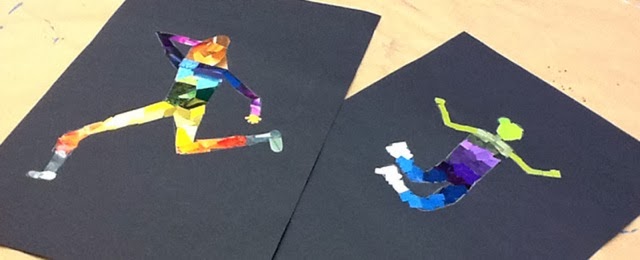I went to Telluride last month and was totally inspired by the mountains. I decided to do a mountain focused lesson with my students and really emphasize the textural nature of them and how their contour is far from the zig-zaggy points usually drawn to represent them.
This year my classes are only 30 minutes and I travel to the classrooms. I am limited on time, set-up time, clean-time, materials, space, everything pretty much.... so I have to really decide what I want to accomplish with the students.
This project took 3 30 minute sessions and I am so excited about the results!
First class we did a "watercolor science experiment" and discussed how to create what looks like texture in a picture and washes.
The students painted washes on watercolor paper with blue/purple/brown/black (AND i was able to use up my older watercolor sets that had those colors left!).
We sprinkled salt on the paint and placed saran wrap across parts of the paper to create textures in the paint as it dried.
Day two I printed out some examples of mountain ranges so that the students could examine various mountain contours.
On OAK TAG the students drew a mountain range contour line across the top of the paper. They put a star on that side so they used the correct side each time.
They cut along the line then traced the stencil on to the watercolor paper and cut out the mountain shapes out of their painting. We also saved the cut off piece.
Day three we colored pastel along the edge of the oak tag stencil.
Then using a folded paper towel we brushed the pastel on black paper to create a colored silhouette in the night sky.
We attached the black paper background,watercolor mountains, and smaller watercolor cut out together by stapling them together. Then we used toothpicks to dot silver paint for stars in the sky.
Every single one of them was a great success!



























